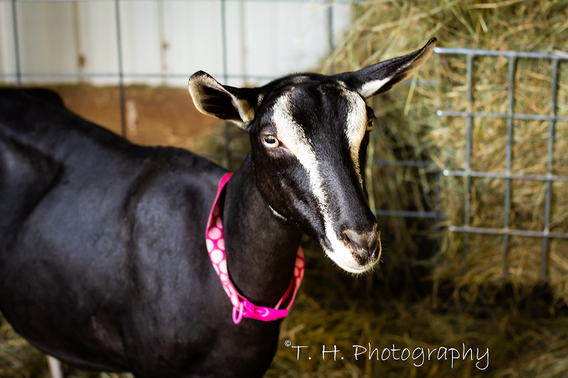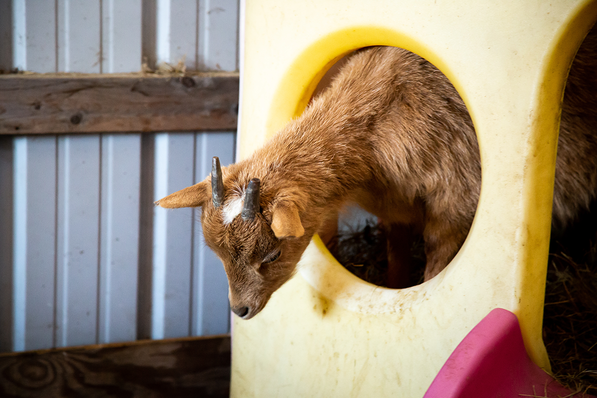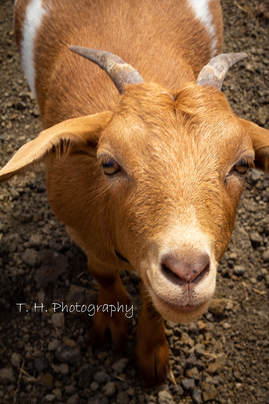|
The past two weekends while we were out, we talked to quite a few different people about goats, showing, and the diseases that they can carry. Diseases that are contagious. In this department people need to be more educated. There needs to be more caution taken when breeding, raising, and selling our livestock. Education is the key. I'll admit we lacked it when we started out. Here is our story. No judgement please. It could have been far worse. We want other's to avoid this heartache. Tiny Hiney Farm with Lapis, Rouge, and Vixen at the first Fantasy Faire. Photograph ©Cindy Edwards A beautiful doe from the St. Lawrence County Fair. We started our journey with goats about 8 years ago with a Saanen and a Saanen/Nubian cross. Then we added a little Nigerian Dwarf buckling who was more than likely crossed with something with fiber. A trip to the auction barn brought home three more goats. We had our ups and downs with them. But that is the way of a farm life. We didn't know then what we know now about some of the husbandry that went into goat care. They are supposed to be hardy right? We will get to that later. Our first set of babies born on our little hobby farm. Crosses but we loved them. Then a year and a half ago we decided to take and raise Nigerian Dwarf goats as our choice breed. At first we didn't care about registration, which we later changed our mind on. Go figure! That is the way it always goes. We asked the question to the breeders for the goats we were picking up to add into our herd. Do you have a clean herd? The unregistered homes said "yes we do." Oh, how naive and trusting can we be? Please, don't answer that. When we had a mix of our first goats we got, our unregistered goats, and a couple registered goats, we called the vet to do a testing of the herd. Surprise when one of our goats came back with CAE at a very high percentage. To say we were upset is putting it lightly. This girl was only a little over a year old and bred. A trusting lab, Cornell University did the test, through the vet. Her sister, we were sure was positive, too. They were not able to get a full specimen from her. She was also bred. Now it was time to do some research. We separated the infected girls from everyone else. Watched them like hawks for signs of kidding. Pulled the babies as soon as they hit the ground twins does from one and a singleton doe from the other. Amber, who had twins we milked out. The babies were all bottle raised with colostrum replacer and milking supplement. We didn't have any others in milk or knew anyone to get goat milk from. Lucky, couldn't be milked, she ended up with going into a hard utter and she went symptomatic. We lost her and her little doe a short while later after birth. Devastating isn't it? Amber playing on the play gym. Anyone who has lost a goat or has had a goat suffer from CAE knows it is a horrible disease. We refer to it as the HIV for goats here at our form. Heartbroken at something that with proper care could be avoided. Now what did we do with our infected doe that was left and our two twin doelings? Peanut passed away during the winter. She was healthy and then the next morning gone. No signs of anything wrong at all. Truly not sure of the cause. Amber, we couldn't justify passing her on to a home that "might" promise not to breed her. A hard decision but we decided to cull her and not take the chance of having spread this disease any further. The last little doeling, Buttercup has been tested and is free and clear of CAE/CL/Johnes. Our hearts were happy when we heard this news. To have a beautiful, little doeling that has a fighting chance after all her odds were against her. She is one of the lucky ones. Now that we know this, Buttercup is available for a new home. We will be doing screenings looking for the spot that is perfect for her. Our little miracle Buttercup. Hard to get a photograph because she is on you like static clink. In light of all the experience that we went through, our whole herd was tested June 2018. Every single goat came back negative for CAE/CL/Johnes. A clean herd for us. We are going to strive hard to keep it that way. When our kids are born next year we will work on an education package for new goat owners. If anyone has any questions we are here for them. Somethings though we're still learning. It's a process. Now, for those who don't know what CAE is please do your research, or stay tuned for the next part to this blog which will post next Wednesday. Blessed be to you all.
1 Comment
|
Kimberly Doerr
|





 RSS Feed
RSS Feed